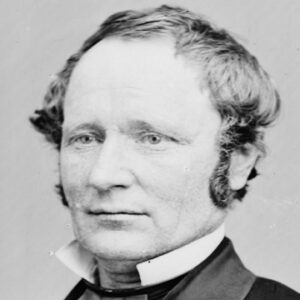From March to November 1885, Thomas Andrew Hendricks, an American statesman and lawyer, served as the 21st Vice President of the United States. Hendricks was born in Ohio to a farmer and raised in Shelby County, Indiana, where he graduated from Hanover College. Hendricks studied law after graduating from college, passed the bar test, and opened a law firm in Indiana. Later, as a member of the Democratic Party, he was elected to the Indiana assembly and served as one of Indiana’s members in the United States Congress for several years. Hendricks was eventually named commissioner of the United States General Land Office and later served as a United States Senator of Indiana during the American Civil War. During his time in the United States Senate in the late 1860s, he achieved widespread national acclaim. From January 1873 to January 1877, he was the first Democrat elected governor of a Northern state following the Civil War. Despite the fact that the Democratic Party’s vice presidential contender, Hendricks, lost the 1876 elections, the party chose him as its vice presidential candidate again in the 1884 general elections. Hendricks won in a close battle this time, with Cleveland as the party’s presidential candidate. Unfortunately, Hendricks was unable to serve as vice president for long, and his health deteriorated within nine months of his inauguration, and he died in his sleep.
Childhood and Adolescence
Thomas Hendricks was born in Muskingum County, Ohio, to John Thomson Hendricks, a farmer who subsequently became interested in politics, and his wife, Jane, on September 7, 1819. He was one of eight children in a family of eight.
His family migrated to Shelby County, Indiana, around 1820 after settling on a farm in Madison, Jefferson County, Indiana. Hendricks’ family’s home was frequently visited by the state’s important leaders after his father was appointed deputy surveyor of public lands for his district, which piqued his interest in politics at a young age.
Hendricks had his elementary education at Shelby County Seminary and Greensburg Academy before enrolling at
Hanover College in Hanover, Indiana, where he graduated in 1841.
He went to a law school in Chambersburg, Pennsylvania, after finishing college. He returned to Indiana following that and was admitted to the bar in 1843. He then established a private law practice in Shelbyville.
Career of Thomas A. Hendricks
Thomas Hendricks first entered politics in 1848, when he was elected to the Indiana House of Representatives for a one-year term as speaker of the house.
Hendricks was elected to the United States House of Representatives as a Democrat from Indiana’s 5th district in 1850, where he served from March 1851 to March 1853.
In the 32nd Congress, he was the head of the Committee on Mileage.
He was a member of the United States House of Representatives from Indiana’s 6th district from March 1853 to March 1855. In the Thirty-third Congress, he served on the Committee on Invalid Pensions.
Hendricks was named Commissioner of the General Land Office in Washington, D.C., in 1855, a position he held until 1859. Hendricks returned to Indianapolis after quitting as land commissioner and ran for governor of Indiana as a Democrat in 1860, but failed.
During the American Civil War, he was elected to the United States Senate by the Indiana General Assembly in 1862. From 1863 until 1869, he served in the Senate as the head of the small Democratic minority in the Thirty-eighth, Thirty-ninth, and Fortieth Congresses.
In 1868, he failed a re-election bid for governor of Indiana, and he resigned from the Senate in March 1869. He returned to his own law business in Indianapolis following that, but remained active in state and national politics.
Hendricks was elected governor of Indiana for the third time in 1872, and served in that position from January 1873 until January 1877. His stint as governor of Indiana was defined by the 1873 economic panic, and he was unable to enact any meaningful legislation due to opposition from a strong Republican majority in the Indiana General Assembly.
In 1876, he ran for Vice President of the United States as a Democrat Party candidate, but lost. The party nominated him for vice president again in 1880, but he rejected due to health concerns.
Despite his ill health, he was nominated for Vice President of the United States on the Democratic Party’s ticket in the 1884 election, with Grover Cleveland as the party’s presidential contender. Hendricks won the second time around and was elected vice president.
On March 4, 1885, Hendricks was sworn in as the United States’ 21st Vice President. His time was cut short, however, when he died suddenly on November 25, 1885.
Major Projects of Thomas A. Hendricks
Hendricks was successful in persuading the Indiana legislature to pass electoral reform and judicial reform during his tenure as governor. He suggested building a new Indiana Statehouse while in office, and the cornerstone was set in 1880, after he had left office. The structure was finished eight years later and is still in use today.
Personal History and Legacy
Thomas Hendricks married North Bend, Ohio’s Eliza C. Morgan in 1845. Morgan, their son, died tragically when he was three years old.
At the age of 66, Thomas Hendricks died in his sleep on November 25, 1885, in Indianapolis, Indiana, United States. His funeral was held at St. Paul’s Cathedral in Indianapolis, and he was later laid to rest in Crown Hill Cemetery in Indianapolis.
Estimated Net Worth
The estimated Net worth of Thomas A. Hendricks is unknown.


